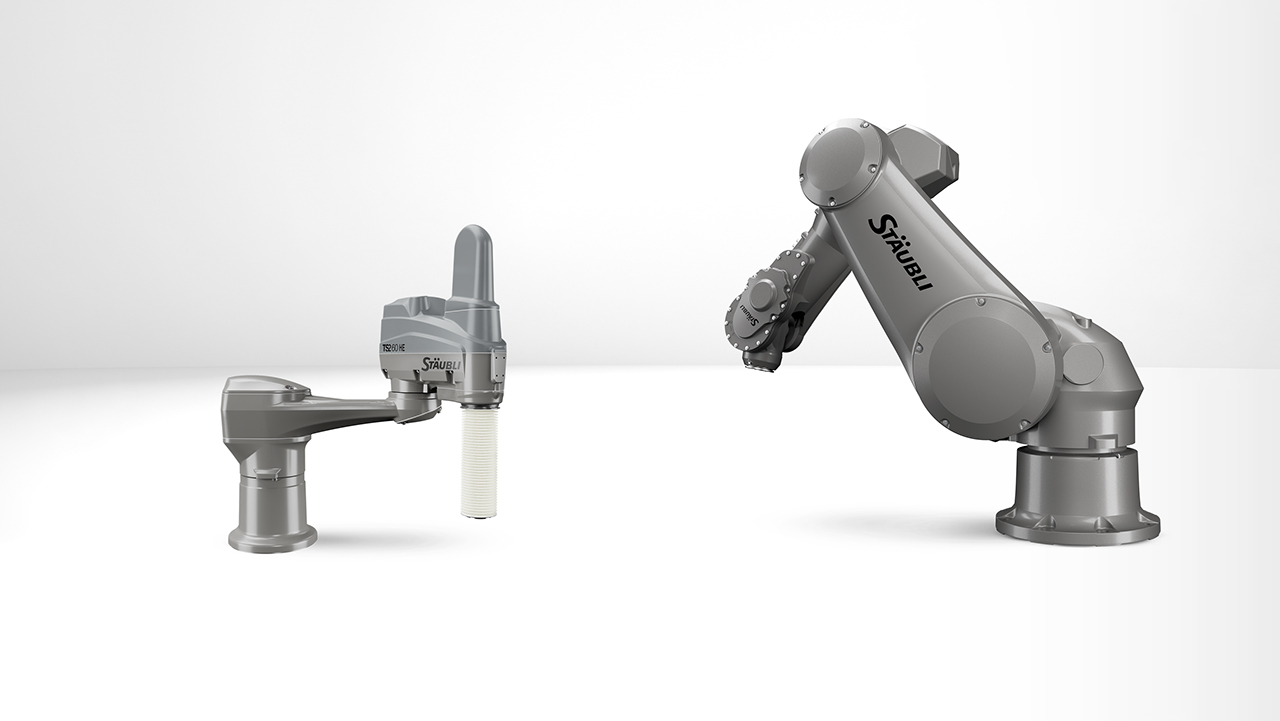SUCCESS STORY
Six-axis robot loads slicer with hefty sausages
Supermarket chain uses a large Stäubli six-axis robot to load a sausage slicing and packaging machine at its processing facility in Heilbronn, Germany. A world premiere that relieves the workload on employees and brings many other benefits.
CUSTOMER BENEFITS
- Safe compliance with the strictest hygiene standards
- Relief for employees from strenuous work
- Consistently high output
- Washdown-capable robots for easy cleaning
- Maximum flexibility
- Minimal space requirements
TASK
Automation of an industrial sausage slicing machine
German grocery chain Kaufland is breaking new ground in the handling of 12-kg sausages. A Stäubli TX200 HE six-axis robot recently took over the loading of an automatic slicing and packaging machine that prepares delicious cold cuts from 1.5-meter-long sausages. The globally unique robotic solution is considered a milestone in the industry.
Loading a slicer with 1,500 millimeter-long, 12-kilogram sausages for an entire shift was once one of Kaufland’s employees’ least favorite tasks. With production at the Heilbronn plant moving to even faster processes, it became nearly impossible to do manually. The obvious solution was to consider robot-supported automation.
What initially sounded like a simple task – picking up four sausages at a defined position and transferring them to the slicer – turned out to be a more challenging project on closer inspection.
Rainer Bonfig, Managing Director at Stäubli partner bsb robot systems GmbH, sums up the main challenges: “The daily cleaning procedures were not the problem. We know that Stäubli HE robots can easily handle this. Rather, it was the limited space available and the gripping technology that had to handle the product safely and gently.”
SOLUTION
The world’s first robot-assisted slicer loading system
Since Kaufland is probably the first company in the world to feed a slicer with a six-axis robot, falling back on known solutions from past projects was not an option. The simplest solution was to select a suitable robot. Due to the disinfection and washdown processes involved, only a fully encapsulated, water-resistant Stäubli HE robot could be considered. And the payload and reach clearly spoke in favor of the large TX200 HE, the specially modified Humid Environment version. This model is like all other Stäubli robots in that it enables the use of food-grade NSF H1 oil without any loss of performance.
bsb developed a special solution to avoid damaging the sausages during handling. As Bonfig explains, "We designed and built a quadruple roller gripper which the Stäubli TX200 six-axis robot positions under the four sausages provided at the transfer position and gently lifts them. The gripper, which weighs just under 80 kilograms, is 1,800 millimeters wide and has four rollers driven by a central motor for each of the four sausages. This prevents the 1,500-millimeter-long, flexible sausages from sagging.”
CUSTOMER USAGE
12,000 kilograms of sliced sausage daily
To load the slicer, the Stäubli TX200 precisely controls the transfer position. Once the final position has been reached, the central motor sets the gripper rollers in motion. This ensures that the valuable cargo reaches the slicer feed in a reliable and precise position. To prevent the sausages from slipping on the 3D-printed gripper rollers, they come with a fine, spiky contour that provides the necessary traction during transport.
With this globally unique automation system, Kaufland's Heilbronn plant achieves an output of 12,000 kilograms of sliced sausage per day in two-shift operation. A total of 21 different types of sausage run through the system, combined in four different packaging units and sold in Germany and Eastern Europe.
